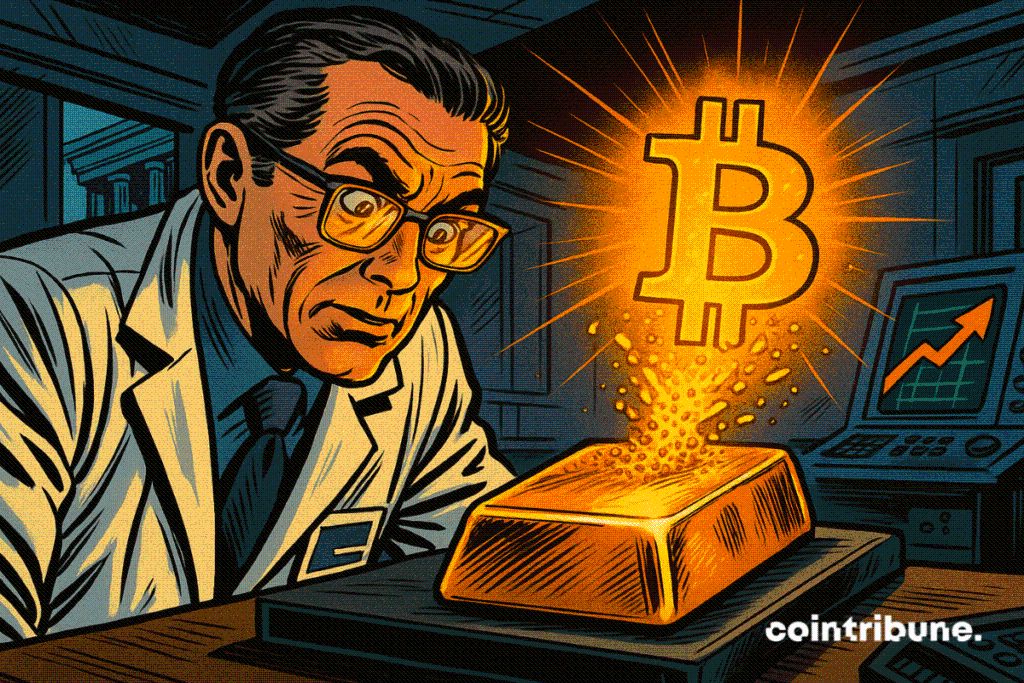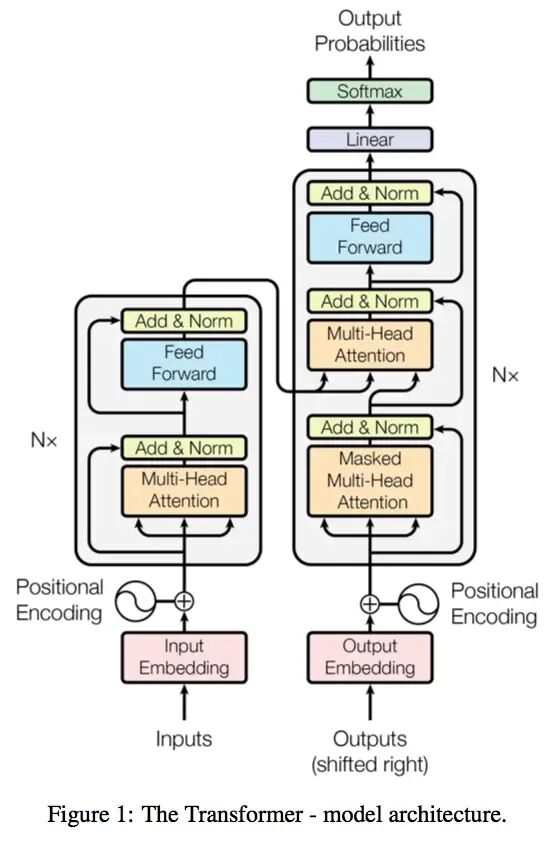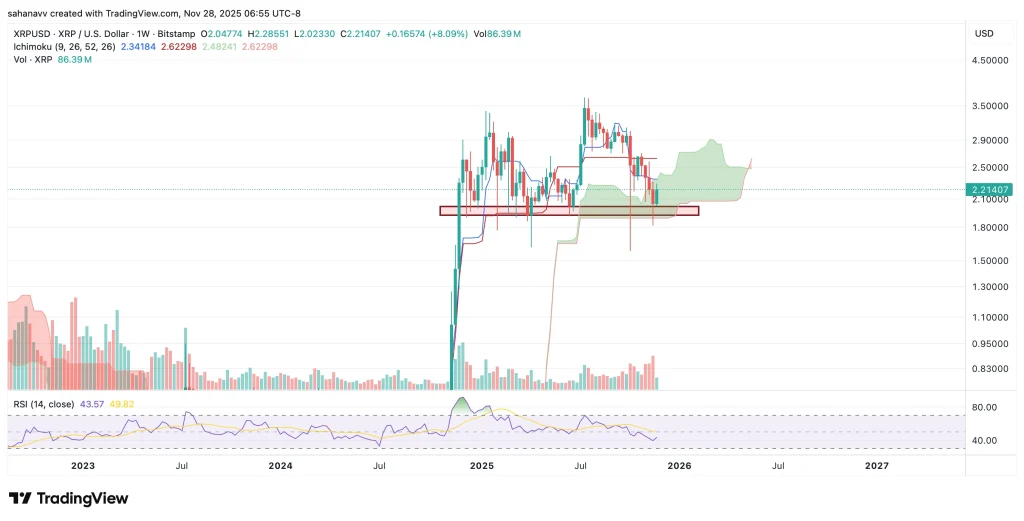Central Banks Stock Up On Gold, Bitcoin Gains Traction
While central banks multiply gold purchases in an uncertain economic context, Deutsche Bank draws an unprecedented parallel with bitcoin. In a published report, the German bank highlights common dynamics between the two traditionally opposed assets. This analysis questions the place that bitcoin could hold in official reserves in the medium term.

In brief
- Central banks are sharply increasing their gold purchases, reaching an unprecedented level since the 1990s.
- Deutsche Bank notes that gold now represents 24 % of official reserves, compared to a much lower average over the last decade.
- This gold rush reflects a loss of confidence in fiat currencies and a return to tangible assets.
- Bitcoin, like gold, shows a low correlation with traditional assets and decreasing volatility.
Gold regains a central role in central banks’ strategies
While gold and bitcoin reach record highs , Deutsche Bank reveals in its latest report “Gold’s reign, Bitcoin’s rise” that the share of the precious metal in official central bank reserves reached 24 % in the second quarter of this year, its highest level since the 1990s.
This level reflects a major strategic shift in reserve asset management. The bank’s analysts note that official gold demand is now growing at a rate “twice the average for the 2011–2021 period“.
More than just a cyclical rebound, this dynamic is seen as a return of gold to the heart of financial sovereignty logics. The report specifies that “the renewed accumulation of gold marks a major turning point in global finance, evoking behavior observed during much of the 20th century“.
This resurgence of gold occurs even as the yellow metal has just surpassed, in real terms, its highest historical peaks reached in 1980, according to inflation adjustments.
Deutsche Bank identifies several factors explaining this late evolution and the importance of the current moment :
- Decades of massive sales by central banks, notably in the 1990s and 2000s, which had helped keep prices under pressure ;
- Institutional disposal obligations, notably for certain funds under regulatory constraints ;
- The lasting effect of the transition to the fiat currency era, since the abandonment of the gold standard in the late 1970s ;
- The loss of the formal role of gold as a reference asset, established in 1979 when the IMF banned member states from tying their currency to gold ;
- The gradual return of distrust towards fiat currencies, amplified by multiple monetary crises and unconventional monetary expansion policies.
In sum, gold seems to be reclaiming a function it had not officially held for over forty years. An evolution which, according to Deutsche Bank, opens the way to new interpretations of reserve assets, including digital ones.
Bitcoin : a trajectory that catches the attention of institutions
In the same report, Marion Laboure, macro-strategist at Deutsche Bank, draws an explicit parallel between the dynamics of gold and those of Bitcoin. She notes that these two assets share major common characteristics : “a low correlation with traditional assets, historically high volatility, although sharply decreasing for Bitcoin, and a role as a safe haven during times of instability“.
According to her, these similarities could pave the way for wider institutional adoption, possibly even integration into central banks’ balance sheets.
However, Laboure does not downplay the remaining obstacles. She acknowledges that bitcoin remains an asset “backed by nothing“, which represents an ideological hurdle for many institutions. Added to this are technical and economic limitations, such as “limited use, perceived high risk, speculative nature, cybersecurity vulnerabilities, and liquidity constraints“. Despite these reservations, Deutsche Bank considers it plausible that bitcoin and gold “could both appear in central banks’ balance sheets by 2030“.
If this hypothesis materializes, it would signify institutional legitimization of bitcoin, but also a redefinition of reserve assets in an increasingly multipolar world. The growing interest of some states in including BTC in their strategic reserves, as evidenced by the recent summit meeting to advance the project in the United States , although marginal for now, could accelerate this dynamic.
Disclaimer: The content of this article solely reflects the author's opinion and does not represent the platform in any capacity. This article is not intended to serve as a reference for making investment decisions.
You may also like
No wonder Buffett finally bet on Google
Google holds the entire chain in its own hands. It does not rely on Nvidia and possesses efficient, low-cost computational sovereignty.

HYPE Price Prediction December 2025: Can Hyperliquid Absorb Its Largest Supply Shock?

XRP Price Stuck Below Key Resistance, While Hidden Bullish Structure Hints at a Move To $3

Bitcoin Price Prediction: Recovery Targets $92K–$101K as Market Stabilizes
